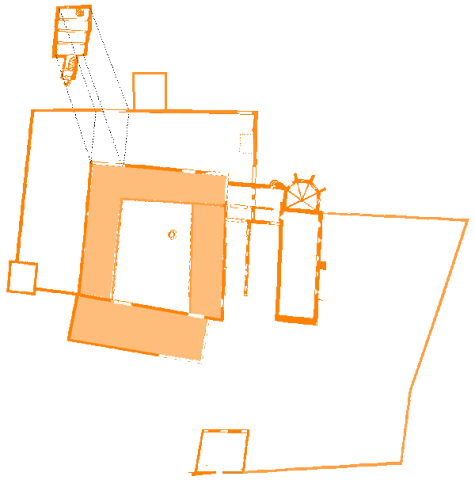After his nomination as cardinal in 1342, Etienne Aubert acquired a field that had been used as a threshing floor which belonged to the Saint André abbey, for the purpose of building his palace, like Pope Clement VI and several other cardinals had done. Cardinal Etienne Aubert’s palace was rectangular and occupied the current location of the Saint John Cloister. Etienne Aubert was elected pope in 1352, and took the name Innocent VI. While pope, he acquired the land adjoining his palace to the east. There he built the Saint John the Baptist chapel and a large Consistory room which later became the Tinel or monks’ refectory. Today it is used as a theatre. He had his papal apartments built between the palace and the Consistory chapel. The chapel was painted by the Italian artist Matteo Giovannetti (part of the Sienna school) who was born in Viterbo and also worked on the Palace of the Popes in Avignon. During this same period, the papal cellars north of the palace were also dug, and the entrance to the palace and the outbuildings was organised to the south, in the building later referred to as “The Procurer’s building”.
Each year the Centre has nearly sixty residencies, hosting authors, companies, research and experimental laboratories, training and master classes.
The Centre also oftenopens to the public for rehearsals and other events prepared by the residents and guest artists, particularly in July in partnership with the Avignon Festival.



